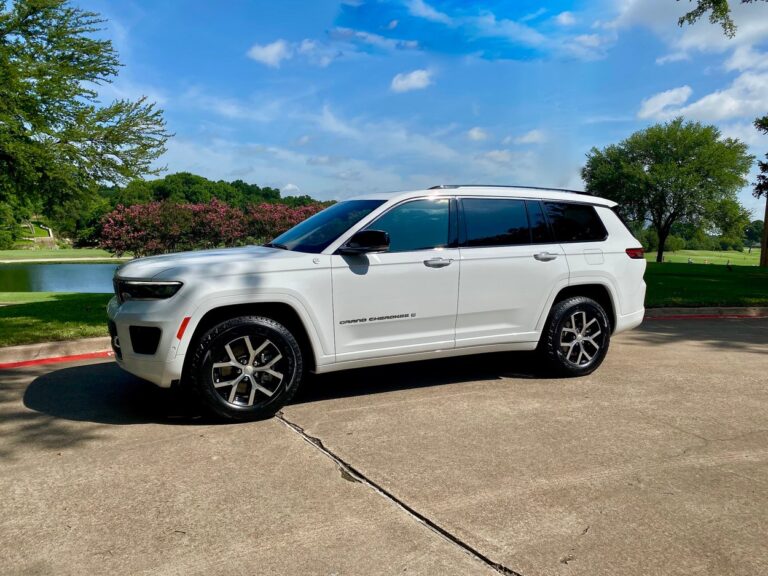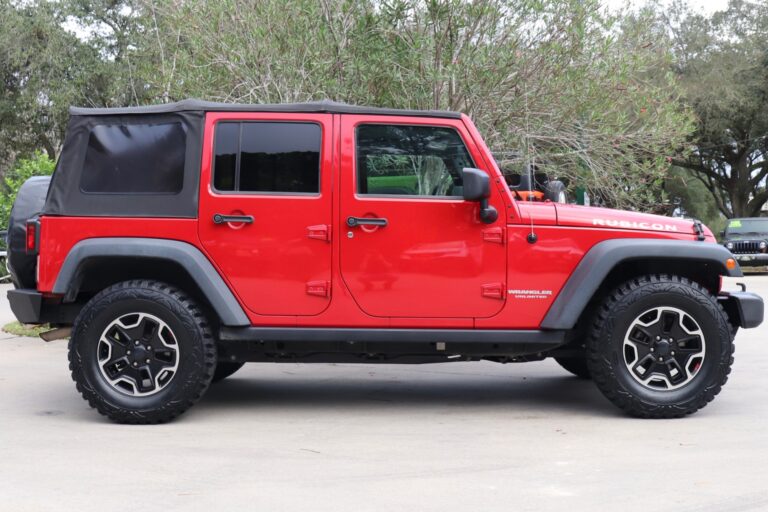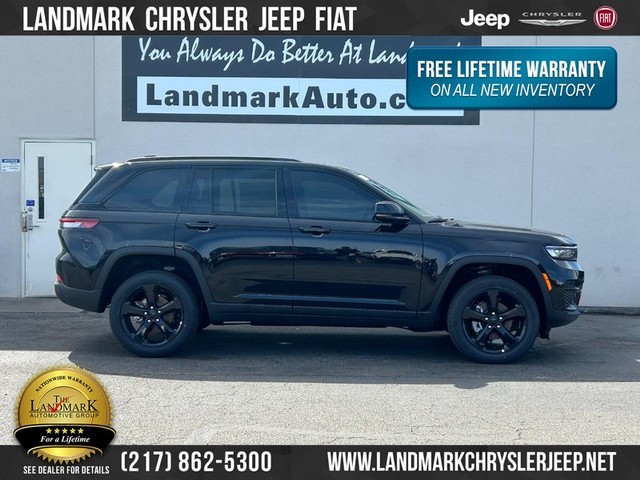Willys Jeep Frame For Sale: Your Comprehensive Guide to Finding and Restoring the Backbone of an Icon
Willys Jeep Frame For Sale: Your Comprehensive Guide to Finding and Restoring the Backbone of an Icon jeeps.truckstrend.com
The Willys Jeep. More than just a vehicle, it’s a symbol of American ingenuity, rugged reliability, and a pivotal piece of automotive history. From the battlefields of World War II to the farms and trails of post-war America, the Willys Jeep, in its various iterations (MB, CJ-2A, CJ-3A, CJ-3B, CJ-5), etched its place in legend. At the heart of every one of these iconic machines lies its robust, yet often vulnerable, frame. For enthusiasts, restorers, and custom builders, finding a "Willys Jeep Frame For Sale" isn’t just a transaction; it’s the foundation for bringing a piece of history back to life or crafting a unique off-road masterpiece.
This comprehensive guide is designed to be your go-to resource for navigating the world of Willys Jeep frames. We’ll delve into why these frames are sought after, what to look for, where to find them, and critical considerations to ensure your project starts on the strongest possible footing.
Willys Jeep Frame For Sale: Your Comprehensive Guide to Finding and Restoring the Backbone of an Icon
The Enduring Legacy of the Willys Jeep Frame
The Willys-Overland MB, the original "Jeep," was designed with an incredibly simple yet effective ladder frame chassis. This design, characterized by two long C-channel rails connected by several crossmembers, provided the necessary rigidity for traversing rough terrain while remaining relatively lightweight. As the Jeep transitioned from military to civilian life with the CJ (Civilian Jeep) series, the frame design evolved slightly but retained its fundamental principles.
The frame is, quite literally, the backbone of the Willys Jeep. It supports the engine, transmission, axles, suspension, and body. Its structural integrity is paramount to the vehicle’s safety, performance, and longevity. Over decades of use, abuse, and exposure to the elements, many original Willys frames have succumbed to rust, cracks, or severe damage. This makes the search for a sound Willys Jeep frame a critical step for any serious restoration or custom build project. The enduring appeal lies in the desire to preserve authenticity, create a period-correct restoration, or simply build a custom vehicle on a proven, iconic chassis.
Why Buy a Willys Jeep Frame? Common Scenarios & Benefits
The reasons for seeking out a Willys Jeep frame are as diverse as the enthusiasts themselves. Understanding these common scenarios can help you define your own project needs:
- Restoration Projects: This is perhaps the most common reason. If you have an original Willys Jeep with a severely rusted, bent, or cracked frame, replacing it with a solid, original-style frame (either a good used one or a reproduction) is essential for a true restoration. It ensures the vehicle’s structural integrity and preserves its historical value.
- Custom Builds & Hot Rods: The simplicity and robust nature of the Willys frame make it an ideal starting point for highly customized vehicles. From street rods to extreme rock crawlers, the frame provides a versatile platform that can be modified, stretched, or reinforced to suit specific performance goals.
- Off-Road Enthusiasts: Many builders want to create a dedicated off-road rig without the constraints of a road-legal vehicle. A solid Willys frame allows them to build a purpose-built machine, often incorporating modern axles, engines, and suspension components, while retaining the classic Jeep aesthetic.
- Salvage/Parts Vehicles: Sometimes, a frame is purchased not for a full vehicle build, but to salvage specific components like spring hangers, crossmembers, or unique brackets that are hard to find otherwise.
- Benefits: Choosing the right Willys frame offers numerous advantages. It provides an authentic foundation for historical vehicles, ensures a strong and durable chassis for demanding use, and benefits from a vast aftermarket of compatible parts. Moreover, the iconic nature of the Willys frame lends a certain character and appeal that modern chassis simply cannot replicate.

Understanding Willys Jeep Frame Types and Identification

Before you begin your search, it’s crucial to understand the different types of Willys frames and how to identify them. While seemingly similar, there are subtle yet important distinctions:
-
Original Frames (MB, CJ-2A, CJ-3A, CJ-3B, CJ-5):
- MB (1941-1945): The earliest military frame. Often characterized by specific crossmember designs, shock mount locations, and unique bumperette mounts.
- CJ-2A (1945-1949): The first civilian Jeep frame. Very similar to the MB but with slight modifications for civilian use, such as different shock mounts and the omission of certain military features.
- CJ-3A (1949-1953): Evolved from the CJ-2A, with minor changes to crossmembers and mounting points.
- CJ-3B (1953-1968): Known for its "high hood" design, the CJ-3B frame shared many similarities with the CJ-3A but had specific modifications to accommodate the taller engine.
- CJ-5 (1955-1983): A significant evolution, the CJ-5 frame is longer and wider than its predecessors, with different body mounts, suspension mounting points, and overall dimensions. It’s generally not interchangeable with earlier models without extensive modification.
- Identification: Original frames often have subtle factory stampings or unique weld patterns. Researching specific model year differences is key. Look for original crossmembers, spring hangers, and body mounts to distinguish between models.

-
Reproduction Frames: Several manufacturers, such as MD Juan, Omix-ADA, and various custom fabricators, produce new Willys frames.
- Pros: Made from new steel, no rust issues, often dimensionally accurate, sometimes improved with stronger welds or thicker steel in critical areas. A perfect solution for a "fresh start" restoration.
- Cons: Can be significantly more expensive than a used original frame, and some purists may prefer an original frame for ultimate authenticity.
- Identification: Reproduction frames are typically sold as new, bare steel components. They will lack the patina and wear of an original and may have slightly different manufacturing marks.
The Search: Where to Find Willys Jeep Frames For Sale
Finding the right Willys Jeep frame requires patience and knowing where to look:
- Online Marketplaces:
- eBay: A vast source, but condition can vary wildly. Use specific search terms like "Willys MB frame," "CJ-2A chassis," or "Jeep Willys frame."
- Facebook Marketplace & Groups: Numerous vintage Jeep and 4×4 groups are excellent for finding parts directly from other enthusiasts. Often, you can find local sellers, reducing shipping costs.
- Craigslist: Good for local finds, but requires careful filtering and direct communication with sellers.
- Specialized Forums & Clubs: Websites like "The CJ2A Page," "G503.com" (for military Jeeps), and various national/local Willys clubs often have "For Sale" sections where members list parts. These communities are invaluable for advice and reputable sellers.
- Parts Dealers & Restorers: Companies specializing in vintage Jeep parts (e.g., Kaiser Willys Auto Parts, Omix-ADA dealers, Walck’s 4WD) often stock reproduction frames or occasionally have good used original frames available.
- Salvage Yards/Scrap Yards: While rare, you might stumble upon a complete Willys or a good frame in an old salvage yard. These are often diamond-in-the-rough finds.
- Auctions: Online and live vehicle auctions sometimes feature complete Jeeps that might be good candidates for frame donation or parts.
What to Look For: Essential Inspection Checklist
Once you’ve located a potential frame, a thorough inspection is paramount. This is where you can save yourself significant time, money, and headaches down the road.
- Rust and Corrosion: This is the number one enemy.
- Surface Rust: Common and generally manageable with sandblasting.
- Pitting: Deeper rust that eats into the metal. Minor pitting is acceptable, but extensive pitting weakens the structure.
- Rot-Through: Areas where the rust has created holes. Common areas include spring hangers, body mounts, crossmember joints, and the bottoms of the C-channel rails. Check these areas meticulously.
- Cracks and Bends:
- Stress Points: Pay close attention to areas around the steering box mount, spring perches, shackle mounts, transmission mounts, and where crossmembers attach to the main rails. These areas are prone to cracking from stress or hard use.
- Accident Damage: Look for signs of bending, twisting, or crumpling, especially at the front or rear.
- Previous Repairs: Examine any welds or patches. Are they professionally done? Poor, amateurish welds or thin patches can be structural weak points.
- Straightness/Alignment: This is critical. A bent or twisted frame will cause alignment issues, handling problems, and make body mounting a nightmare.
- Visual Check: Stand at both ends and sight down the rails. Do they look straight?
- Measurements: If possible, bring a tape measure. Compare diagonal measurements from opposing corners, and measure from fixed points (e.g., center of axle mounts to a crossmember) to check for squareness.
- Flatness: Place a straight edge or long level across various points to check for twist.
- Mounting Points: Ensure that the body mounts, engine mounts, transmission mounts, and spring hangers are intact and in good condition. Damaged or missing mounts will require extensive repair.
- Completeness: Are all the original crossmembers present? Are there any major sections missing that would require complex fabrication?
Navigating the Purchase: Tips for a Smooth Transaction
- Ask Detailed Questions: Don’t hesitate to inquire about the frame’s history, specific damage, previous repairs, and why it’s being sold.
- Request High-Resolution Photos/Videos: If an in-person inspection isn’t possible, ask for detailed photos of all angles, especially problem areas you’ve identified in your checklist. A video walk-around can also be very helpful.
- In-Person Inspection (If Possible): This is always the best option. Nothing beats seeing and touching the frame yourself. Bring your inspection tools (flashlight, magnet, tape measure).
- Understand Shipping/Logistics: Willys frames are large and heavy. Freight shipping can be expensive (often $300-$1000+ within the US, depending on distance and carrier). Factor this into your budget. Local pickup is ideal if feasible.
- Pricing Considerations: Prices vary wildly based on condition, rarity, model, and whether it’s an original or reproduction. Be prepared to pay more for a frame in excellent condition or a newly fabricated reproduction.
- Paperwork: While frames typically don’t have VINs themselves (the VIN is usually on the body or a data plate), if the frame comes from a titled vehicle, ensure you get a bill of sale and any associated paperwork. This can be important for registration purposes, depending on your state’s laws regarding frame swaps.
Restoration & Preparation: What Comes Next?
Once you have your Willys frame, the real work begins:
- Cleaning & Blasting: Remove all rust, old paint, and grime. Sandblasting or media blasting is the most effective method, revealing any hidden issues.
- Repairing Damage: Address any cracks, bends, or rot. This often involves cutting out damaged sections and welding in new steel patches or fabricating replacement sections. Ensure all welding is done by a skilled professional, especially for structural repairs.
- Reinforcement: For heavy-duty off-road use or high-horsepower engine swaps, consider strategically plating the frame in high-stress areas (e.g., steering box mount, spring perches) for added strength.
- Painting/Coating: Apply a high-quality rust-preventative primer and a durable chassis paint or powder coating. This protects your investment for years to come.
- Component Installation: Install new or refurbished engine mounts, transmission mounts, body mounts, and suspension components.
Willys Jeep Frame For Sale: Estimated Price Guide
Please note that these prices are estimates and can vary significantly based on location, seller, specific model year, market demand, and the exact condition of the frame. Always inspect thoroughly and negotiate based on your assessment.
| Frame Type/Condition | Estimated Price Range (USD) | Key Factors Influencing Price |
|---|---|---|
| Original Willys MB/CJ-2A/3A Frame | ||
| Heavily Rusted/Damaged | $300 – $800 | Requires extensive repair, may be bent, suitable for parts. |
| Usable "Core" (Minor Rust/Bends) | $800 – $1,500 | Needs sandblasting, minor rust repair, some patching. |
| Good Condition (Surface Rust Only) | $1,500 – $2,500 | Solid, straight, minimal pitting, excellent base for restoration. |
| Professionally Restored/Blasted | $2,500 – $4,000+ | Ready for paint, all repairs done, perfectly straight, often coated. |
| Reproduction Willys Frame (e.g., CJ-2A/3A) | ||
| New, Unassembled/Raw Steel | $2,000 – $3,500 | Basic frame rails and crossmembers, requires final assembly/welding (rare). |
| New, Assembled/Bare Steel | $3,000 – $4,500 | Fully welded frame, raw steel, ready for prep and paint. |
| New, Assembled/Coated/Painted | $4,500 – $6,000+ | Fully welded, blasted, and professionally coated/painted, often with basic mounts. |
| Specialized/Custom Frames | ||
| Custom-Built for Specific Projects | $4,000 – $10,000+ | Built to order, custom dimensions, heavy-duty materials, often with specialized suspension mounts. |
Frequently Asked Questions (FAQ)
Q1: What’s the main difference between an MB and a CJ-2A frame?
A1: While very similar, MB frames often have specific features related to military use, such as unique crossmember designs, different shock mounts (especially rear), and specific locations for military bumperettes or blackout lights. CJ-2A frames generally simplified these features for civilian production. Purists can tell the difference.
Q2: Can I use a CJ-2A frame for an MB restoration?
A2: Yes, it’s a common practice due to CJ-2A frames being more readily available. However, for a historically accurate MB restoration, you would need to modify the CJ-2A frame to include the correct MB-specific details, such as changing shock mounts and potentially adding military-specific brackets.
Q3: Do new reproduction frames come with VINs?
A3: No, typically new reproduction frames are sold as bare components without any VIN (Vehicle Identification Number). The VIN is usually associated with the vehicle’s body, a data plate, or the original title. When replacing a frame, you generally transfer the identity of the original vehicle (body/title) to the new frame.
Q4: Is it legal to replace a frame on a Willys Jeep?
A4: Generally, yes, it is legal to replace a frame. However, laws regarding vehicle identification and titling can vary significantly by state or country. If your original frame has a VIN stamped on it (which is rare for early Willys frames, the VIN was typically on the body data plate), or if you are transferring a VIN from a donor vehicle, it’s crucial to check with your local Department of Motor Vehicles (DMV) or equivalent authority to understand their specific requirements for frame swaps and vehicle re-registration.
Q5: How much does it cost to ship a Willys Jeep frame?
A5: Shipping costs for a Willys frame can vary widely, typically ranging from $300 to over $1000 within the contiguous United States. Factors influencing the cost include the distance, the carrier (commercial freight vs. private transporter), whether it’s picked up from a business or residence, and if a liftgate service is required.
Q6: What tools do I need to work on a Willys frame?
A6: Essential tools include a grinder with various discs (cutting, grinding, wire wheel), a welder (MIG or TIG for structural repairs), clamps, measuring tools (tape measure, square, level), safety gear (welding helmet, gloves, eye protection), and potentially specialized frame measuring equipment if you’re correcting significant bends.
Conclusion
The Willys Jeep frame is more than just a piece of metal; it’s the foundation of an automotive legend. Whether you’re embarking on a meticulous restoration to preserve history or building a custom off-road beast, selecting the right frame is the most critical first step. By understanding the different types, knowing where to search, and conducting a thorough inspection, you can ensure your project begins with a solid, reliable backbone. The journey of restoring or building a Willys Jeep is incredibly rewarding, and finding that perfect frame is the key to unlocking that satisfaction. Choose wisely, and you’ll be well on your way to enjoying the timeless appeal of a truly iconic vehicle.




